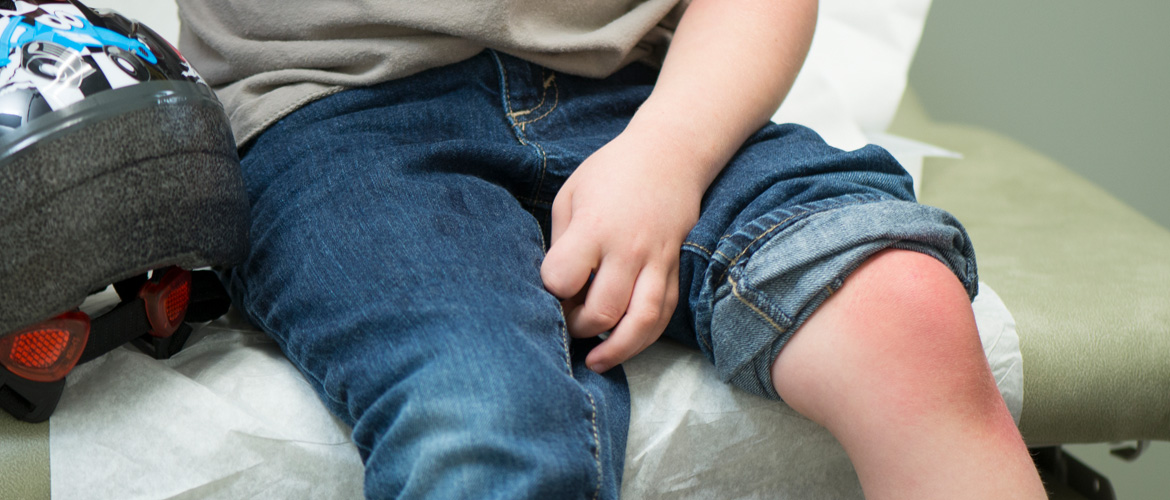Is The Cut Serious?
Sometimes it can be difficult to figure out if a cut needs stitches or other medical treatment.
To help you decide if a cut may need a medical evaluation, here are some signs and symptoms to look for:
- The wound is deep enough to expose the dermis (the layer of skin beneath the outermost layer of skin).
- The wound is too large to easily press the edges together, which could be the result of a laceration or puncture.
- It’s from a bite (animal or human).
- The cut is contaminated or was caused by a rusty object.
Lacerations, Cuts, and Wounds – What's The Difference?
Lacerations and cuts are generally regarded as similar wounds, with lacerations indicating slightly more severe damage to the skin because it’s typically a ragged tear or caused by a sharp object.
A puncture occurs when a foreign object breaks through the surface of your skin and creates a small hole or incision. The wound's severity depends on how deep it is. Common punctures are from splinters, nails, pins, or knives.
If the wound, however, doesn't go much deeper than the epidermis, it may be just an abrasion. Those entail wounds that cause surface layer damage to the skin, and only sometimes draw blood.
All in all, any damage to your skin – whether on the surface level or several layers deep – is considered a wound.

What To Do: Seeking Medical Care For a Cut
If you do seek medical care for your cut, here are some important reminders to help ensure proper healing:
- Do not remove any object, such as a nail, that is stuck in the wound.
- Clean the wound, if possible, with some water and diluted liquid soap. Contrary to popular thought, hydrogen peroxide is not good for cleaning wounds, since it can damage the tissue.
- Apply pressure to the cut and try to elevate it. This will help slow the bleeding.
It May Be Time For Stitches
Depending on the severity of a cut, stitches or staples may be required to stop the bleeding and help the healing process. After cleansing and exploring the wound, your MedExpress medical team may numb the area and apply stitches by carefully threading sutures from one end of the wound to the other. If appropriate, MedExpress may also use Dermabond – a tissue adhesive – to fuse the edges of the wound together. Depending on the nature of the wound and the patient's vaccination status, a tetanus vaccination may be necessary.
For the healing process to continue, it's recommended that patients with stitches, staples, or Dermabond consider the following:
- Keep the wound dry for 24 to 48 hours after stitches or staples have been placed.
- After that short window, cool water and mild soap can be used to gently wash the area, though rubbing or washing the stitches or staples themselves is not advised.
- Pat dry with a clean towel, being careful not to rub the area.
- Apply fresh bandages and ointment if instructed to do so by your provider.
- Antibiotics may be prescribed, in some cases, to prevent infection.
If you have any concerns with how your wound is healing, seek medical care.
Some stitches will dissolve on their own. Others, though, might need to be removed by a medical professional. Staples must also be removed professionally. Your neighborhood MedExpress can help with the proper removal of stitches or staples, if needed.
But What About Minor Cuts and Scrapes?
It’s also important to use proper care to avoid infections or other complications with minor cuts and scrapes. Here are a few reminders: While minor cuts and scrapes don’t always require professional medical treatment, it is important to use proper care to avoid infections or other complications.
Stop the bleeding – If the wound doesn’t stop bleeding on its own, apply continuous, gentle pressure with a clean bandage for 20 to 30 minutes. If the bleeding continues, seek immediate medical treatment.
Clean the wound – Rinse the wound with water and diluted liquid soap. If there is dirt or debris embedded in the wound after washing, visit MedExpress. Thorough wound cleaning reduces the risk of infection and tetanus.
Apply an antibiotic – Once the wound is clean, apply a thin layer of antibiotic ointment or cream. This keeps the surface moist, reduces risk of infection, and helps your body heal more efficiently.
Cover the wound – A bandage helps keep fresh wounds clean and bacteria-free. Change the bandage daily, or if it gets dirty or wet.
Watch for infection – If you notice the wound isn’t healing, or if there is increased pain, redness, drainage, warmth, or swelling, it may be infected. Please visit your neighborhood MedExpress to have a medical provider examine the wound and determine proper treatment.
